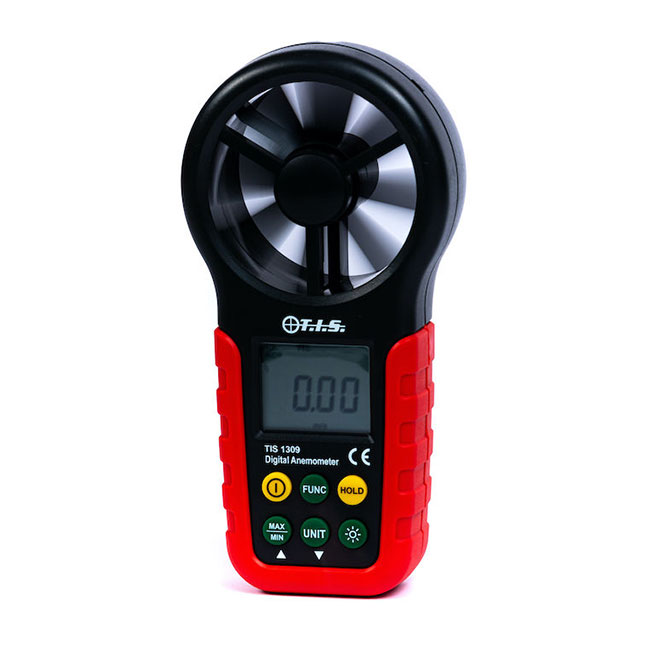
Air velocity is a measurement that is needed in many different industries, such as for HVAC systems, critical containment, electronics or automotive applications. In these fields, the measurement of air velocity is often combined with measuring air pressure, air temperature or air humidity, particularly when installing or maintaining an HVAC system.
Similarly, wind speed is measured in the meteorological field and other industries and the principal in how it is done is the same as measuring air velocity.
What do we use to measure air velocity?
To measure air velocity we use an anemometer. This is a hand-held device with a small fan at the top which has blades or cups attached to catch the wind or air flow, and a digital display and function buttons. For air velocity we can get a reading in various units of measure, such as metres per second (m/s), feet per minute, kilometers per hour, miles per hour and nautical miles per hour.
How does a rotating vane anemometer work?
A rotating vane anemometer acts like a miniature wind turbine or a bicycle dynamo. When the wind blows a wind turbine in an open field, its blades move faster and faster and generate electricity. A rotating vane anemometer is a small wind turbine attached to a small electric motor, which is effectively wired up backwards so that it produces an electrical current when it spins round. The faster the blades turn around – ie. the stronger the air velocity – the higher the electrical current that is produced. So if you can measure the current you have a basic means of measuring air velocity or wind speed.
This is known as a rotating vane anemometer and these typically measure air velocity at an average range of 1 m/s to 15 m/s. The TIS 1309 supplied by Test Instrument Solutions has a range of 0.4 m/s to 30 m/s, and any readings below 0.4 are unlikely to be accurate because such low air velocity is very hard to detect.
So to measure air velocity we simply hold the unit in a representative position to catch the airflow and the digital display will produce an instant reading. The unit calculates the mathematical relationship between the air velocity and the electrical current produced and expresses it on the digital display in the unit of measure you require. If you are measuring the flow of ducting in an HVAC system, for example, the process is slightly different because the average airflow through ducting or a tunnel will not be uniform, so you can’t just take one reading. In this case you should move the anemometer to traverse the cross-sectional area of the ducting and take a series of readings at each point. Then you can average out these multiple readings and have an average air velocity.
What other types of anemometer are there?
There are other ways to measure air velocity using different types of anemometer other than a rotating vane anemometer. It can be done without an electrical generator, and where the anemometer is fitted with a magnetic detector called a reed switch. Here, each rotation of the fans produces an electric pulse and the unit counts each rotation and converts it into the unit of measure required.
Also, a hot wire anemometer uses an electrically heated wire which is placed in the air stream and measures the heat loss of the wire. The heat is transferred from the wire to the air and the temperature of the wire reduces, so the resistance of the wire is able to measure the flow rate of the air and give a reading.
The rotating vane anemometer is widely recognised as the most common and popular method of measuring air velocity and is used across many industries. Some specialist requirements may also use an ultrasonic anemometer or a laser interferometer.
Please note that this section is for information purposes only. Anyone using equipment referred to in this section must be suitably qualified and/or experienced within the respective field. If in doubt before use, please consult a qualified electrician or engineer & thoroughly read all instruction booklets.